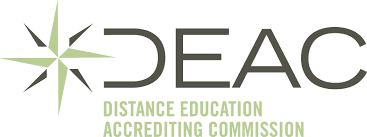A Day In The Life Of An English Teacher In Vietnam
Join a global community of over 200,000 TEFL teachers working throughout the world! Enrol me!
Picture this: You wake up and get ready for a day of teaching. You’re in Hanoi, Vietnam.
Do you have any idea what that looks like?
TTA alumna Taylor is going to give us the real deal on a day in the life of a TEFL teacher in Vietnam, and Hanoi in particular.
Read more: Everything You Need To Know About Teaching English In Vietnam
What can you tell us, Taylor?
You might be picturing chaotic traffic, delicious food, curious students, and a totally new way of life… and you wouldn’t be wrong.
But what’s it actually like? How do you fill your days? What does it feel like to build a routine in a place so far from home?
Before I made the move, I had all those questions (and plenty more).
Now, after living and teaching in Hanoi for three years, I can say with confidence:
life as a TEFL teacher in Vietnam is vibrant, wildly unpredictable, and completely unforgettable.
So here’s a glimpse of what a typical day in Hanoi looked like for me, based on my experience working at a public primary school during the day and a language centre in the evenings.
No two days were ever quite the same.
But this gives you a pretty good sense of what you can expect, especially if you’re juggling multiple teaching jobs and a social life like I did.
Morning mayhem: starting the day

Most mornings begin the same way: with the very enthusiastic crowing of my neighbourhood rooster. Hanoi wakes up early – and loudly!
After getting dressed in my teaching outfit and packing my bag, I step out into the buzz of early morning life.
Markets already in full swing. Locals all around sipping tra da (iced tea) on plastic stools. Aunties and uncles doing tai chi along the lake. Street food vendors dishing out steaming bowls of pho. And the smell of fresh coffee everywhere.
There’s something golden about mornings in Hanoi, literally and figuratively. The sun casts this hazy glow over the city. Everyone’s already out and about, being productive before the day even begins.
Coffee first, always
I wasn’t a big coffee drinker before I moved to Vietnam. That changed very quickly.
Ca phe cot dua (iced coconut coffee) became my daily ritual. Rich black coffee blended with coconut cream, poured over ice. Creamy, energising, slightly sweet, and absolutely addictive.
Sometimes I meet up with a fellow teacher or two for a quick café catch-up before work. There’s something really grounding about sitting outside, delicious coffee in hand, people-watching as scooters whizz past and the city wakes up.
The commute: A daily adventure
My school is about a 20-minute scooter ride away from home.
The traffic in Hanoi is wild, but I genuinely love the commute.
Once you learn how to navigate it and find the shortcuts that only locals use, it becomes second nature.
Zooming down backstreets, weaving between vendors, and discovering new neighbourhoods along the way become part of the fun.
Some mornings, a few friends and I ride in convoy to our respective schools, usually after grabbing coffee or a banh mi together.
My favourite part of the ride is crossing the Long Bien Bridge early in the morning – the mist hanging low over the river, the blur of banana plantations below, and the endless stream of bikes zipping past.
Somehow, it always felt like a scene from a movie.
In the classroom – public school life
I work at a public primary school teaching Grades 1 through 5. The school day is typically split into two blocks:
morning classes, a long lunch/nap break, then afternoon classes.
My first class kicks off at 8 am sharp. I walk into the room to a chorus of little voices shouting: “Good morning Teacher Taylor! How are you today?”
Every. Single. Day. And I love it.
Each lesson is about 45 minutes long, and I usually teach four back-to-back classes in the morning. I always have a Vietnamese teaching assistant (TA) with me, which makes a huge difference, especially for translating or managing rowdy moments.
Read more: Co-Teaching In The EFL Classroom
We follow a set curriculum, but I liked to mix things up. Games, group work, and the occasional competition helps keep energy levels up.
Top Tip: Prep your lesson plans the night before. Mornings are fast-paced, and having everything ready to go makes your life so much easier.

Lunchtime feasting (and nap time!)
Now, here’s something you might not expect: lunch breaks in Vietnam are long. We’re talking 1.5 to 2 hours.
Some days, I eat at the school with my colleagues – usually a tasty canteen-style buffet. Always rice. Always fresh vegetables. Often tofu, meat, or fish. And always a big bowl of soup and soy sauce on the side.
One thing I still can’t get over? Watching tiny six-year-olds casually eating chillies without flinching.
After lunch, the classroom transforms into a napping space. Desks pushed aside, floor mats rolled out, lights dimmed. Everyone, from the teachers to the students, sleeps.
I haven’t quite mastered the midday nap. I usually use that time to grab an iced tea, pop into a local market, do some admin, or call friends back home. But I love how normalised rest is in Vietnamese culture. The West could learn a thing or two.
Midday naps and 2-hour lunch breaks? Taylor for President!

Afternoon flow
After the lunch break, I head back for two or three more classes before the school day wraps up around 3 or 4 pm.
By this point in the day, things are usually a bit more mellow. The heat kicks in. The energy in the classroom dips. But we always find ways to stay engaged – whether through games, movement activities, or good old-fashioned storytelling.
After school, I hop back on my scooter and weave through the late afternoon traffic. Sometimes I head to the gym, meet a friend for a smoothie, or buy some fresh fruit and snacks from my favourite street stalls.
Evening classes – language centre life
A few nights a week, I also teach at a language centre. These classes are usually aimed at kids doing extra English outside of school.
Compared to public schools:
- the groups are smaller (often fewer than 10 students),
- the lessons are longer (around 90 minutes), and
- the atmosphere is more relaxed.
I love my language centre students!
With smaller classes and more time, I really get to know them. I can adapt my teaching style and create stronger connections, which makes the job even more fulfilling.
It is also a completely different vibe. Parents often peek in to say hello. The classrooms are modern and air-conditioned. And I can get creative with activities in ways I can’t always do at public school.

Dinner and nights in the city
After a long day of teaching, it’s time to feast. And in Hanoi, dinner is always a good idea.
You can get a delicious, hot meal from a street vendor for under $1. I almost never cook at home. Instead, my group of friends (mostly fellow English teachers) meet every evening after work to eat, laugh, and swap funny stories from our classrooms.
We have our favourite regular spots where the staff know our orders by heart, but we also love trying new places. Hanoi is packed with incredible food options.
And on nights when I’m not meeting friends, I just grab a banh mi and wander around the lake, listening to my favourite playlist or podcasts. Hanoi’s street food really hits the spot when you need something comforting after a long day.
By night, the city transforms.
The air is cooler. The chaos calms down. West Lake reflects the glow of neon signs. There’s a peaceful energy in the evenings that feels almost magical.
Weekend adventures and Hanoi magic
One of the best things about living in Hanoi? How easy it is to explore the rest of northern Vietnam.
Weekend trips to places like Ninh Binh, Ha Long Bay, Sapa, and Mai Chau became part of my routine. A two-day getaway feels like a full-blown holiday.
But even when we stay in the city, weekends are never dull. Rooftop bars, live music, art shows, yoga classes, secondhand markets, outdoor pools – you name it. There’s always something fun to do if you want to stay busy!

Advice for new teachers
Thinking of making the move? Here are a few tips I wish I’d known earlier:
- Say yes to social invites. Your teacher friends will quickly become like family.
- Learn some basic Vietnamese. Locals will love you for trying.
- Join expat Facebook groups. Super helpful for job leads, housing, and events.
- Prep your lessons ahead of time. You’ll thank yourself later.
- Be flexible. Things don’t always go as planned, and that’s okay.
- Embrace the chaos. It’s part of the charm. Lean into it.
Why I’d do it all again
Taylor (sadly) doesn’t live in Hanoi anymore. Instead, she travels the world (#truestory), living life as a digital nomad. In 2025 she splits her time between Bali, her home country of South Africa – and basically wherever else she fancies.
Of her time in Hanoi she says:
Teaching English in Hanoi was one of the most rewarding, challenging, and transformative chapters of my life.
Of course, it wasn’t always easy. There were days when I was exhausted, overwhelmed, or simply missing home.
But those moments were far outweighed by the richness of the experience, the people I met, the food I ate, the places I discovered, and the growth I went through.
If you’re sitting on the fence about moving to Hanoi to teach English, let this be your sign.
You’re about to live a life that most people only dream of. And in the process, you’ll collect stories, friendships, and lessons that will stay with you forever.

Don’t forget: Your journey to teaching English in Vietnam starts with a TEFL course!
Accreditation & Quality Assurance
The TEFL Academy was the world’s first TEFL course provider to receive official recognition from government regulated awarding bodies in both the USA and UK. This means when you graduate you’ll hold a globally recognised Level 3 (120hr) Certificate or Level 5 (168hr) Diploma, meaning you can find work anywhere and apply for jobs immediately.
 United Kingdom
UK
United Kingdom
UK













